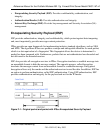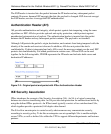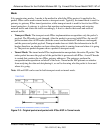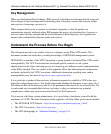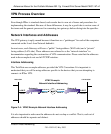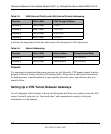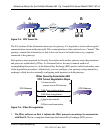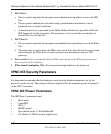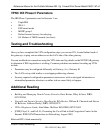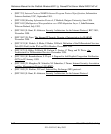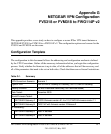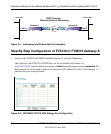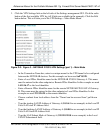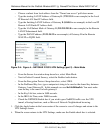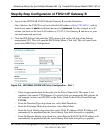
Reference Manual for the ProSafe Wireless 802.11g Firewall/Print Server Model FWG114P v2
F-10 Virtual Private Networking
201-10301-02, May 2005
2. IKE Phase I.
a. The two parties negotiate the encryption and authentication algorithms to use in the IKE
SAs.
b. The two parties authenticate each other using a predetermined mechanism, such as
preshared keys or digital certificates.
c. A shared master key is generated by the Diffie-Hellman Public key algorithm within the
IKE framework for the two parties. The master key is also used in the second phase to
derive IPSec keys for the SAs.
3. IKE Phase II.
a. The two parties negotiate the encryption and authentication algorithms to use in the IPSec
SAs.
b. The master key is used to derive the IPSec keys for the SAs. Once the SA keys are created
and exchanged, the IPSec SAs are ready to protect user data between the two VPN
gateways.
4. Data transfer. Data is transferred between IPSec peers based on the IPSec parameters and
keys stored in the SA database.
5. IPSec tunnel termination. IPSec SAs terminate through deletion or by timing out.
VPNC IKE Security Parameters
It is important to remember that both gateways must have the identical parameters set for the
process to work correctly. The settings in these examples follow the examples given for Scenario 1
of the VPN Consortium.
VPNC IKE Phase I Parameters
The IKE Phase 1 parameters used:
•Main mode
•TripleDES
• SHA-1
• MODP group 1
• Ppre-shared secret of "hr5xb84l6aa9r6"
• SA lifetime of 28800 seconds (eight hours)




